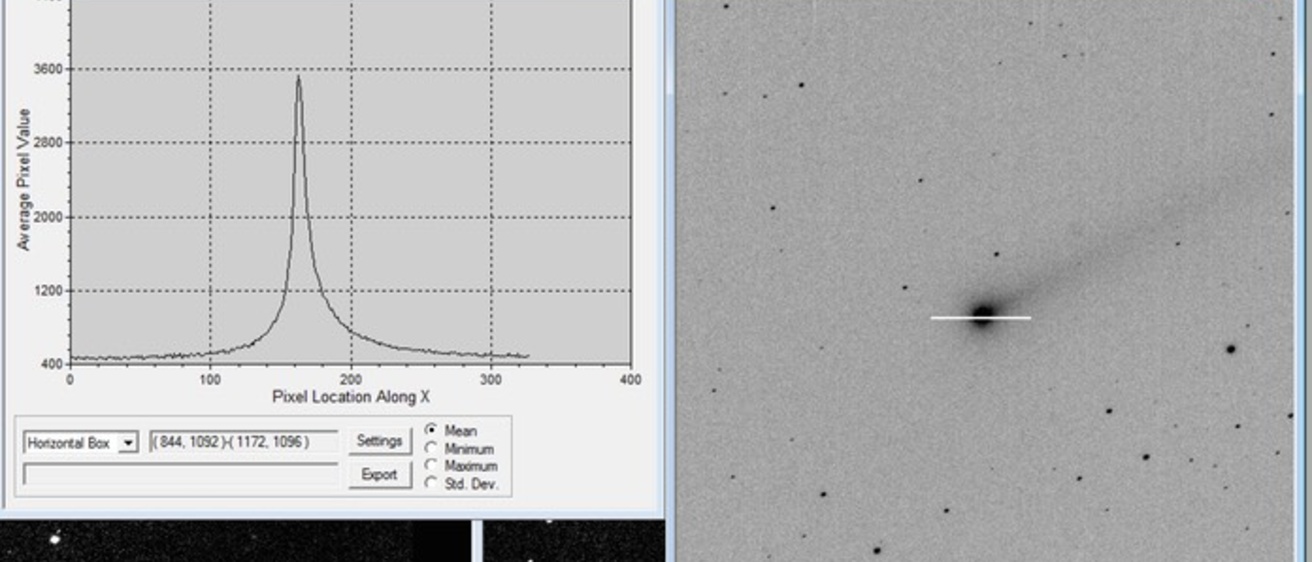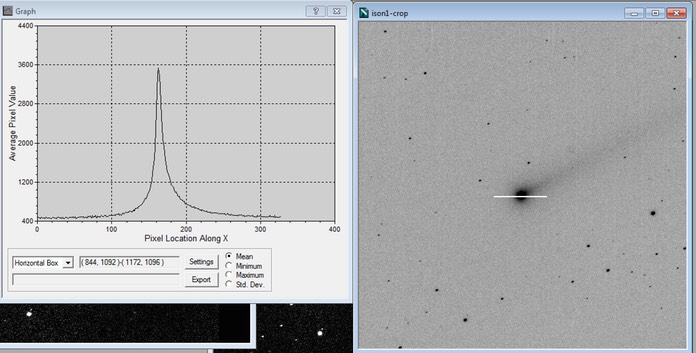Background
In November 2013, the Comet ISON was approximately 1 A.U. away from the Earth. In this part of the lab, you will determine the size of the ISON’s coma and tail and calculate how fast it was moving. You will be using the Small Angle Formula to do this.

